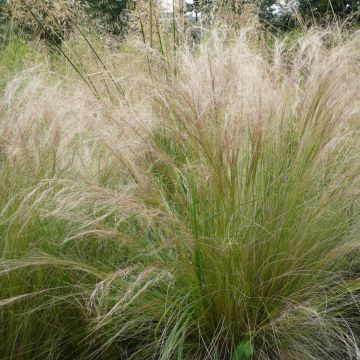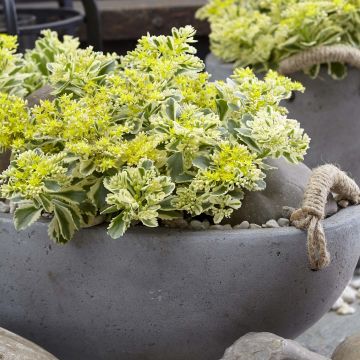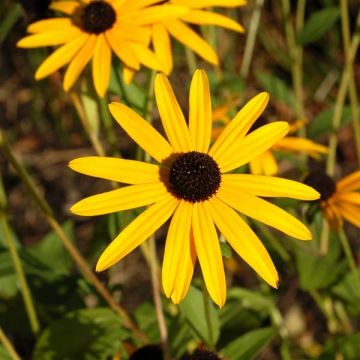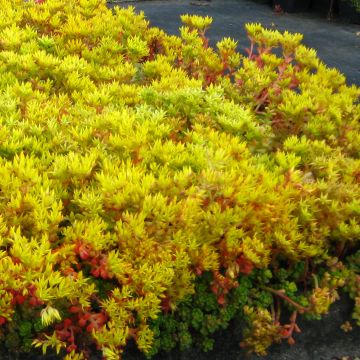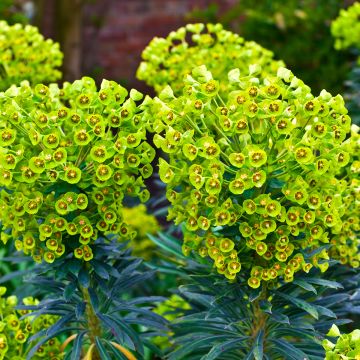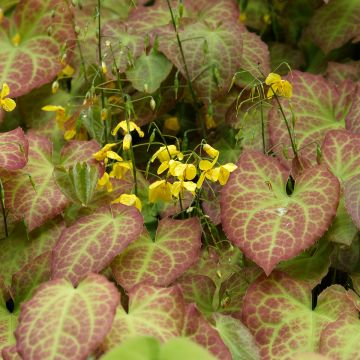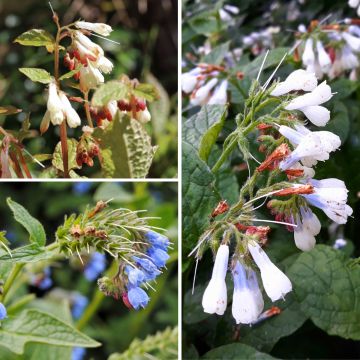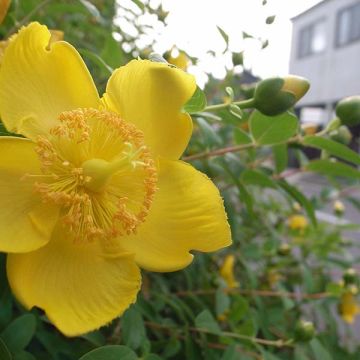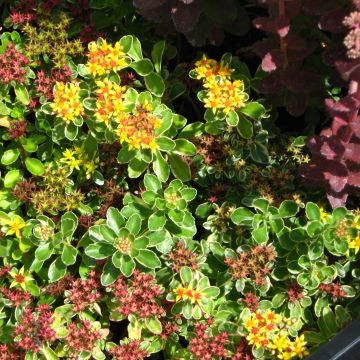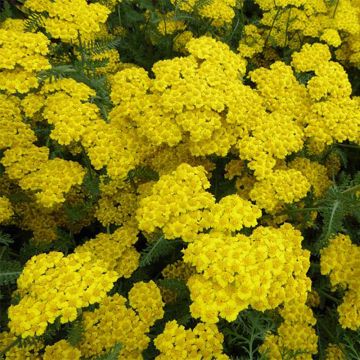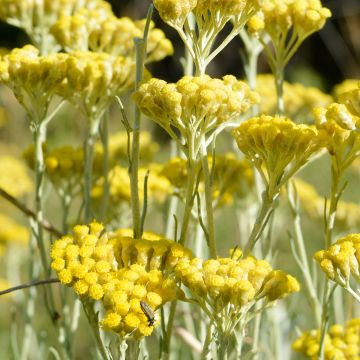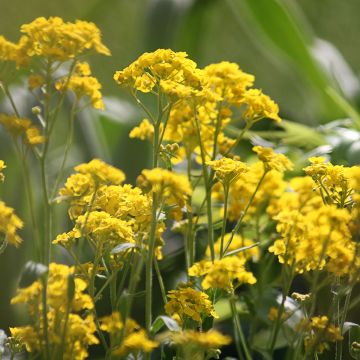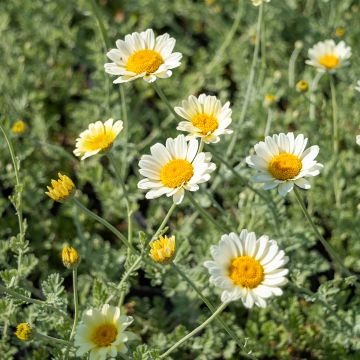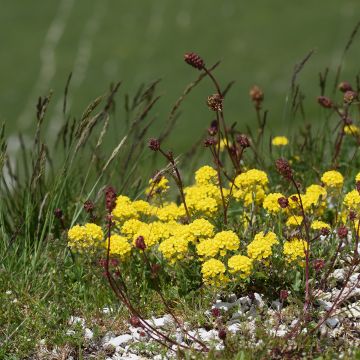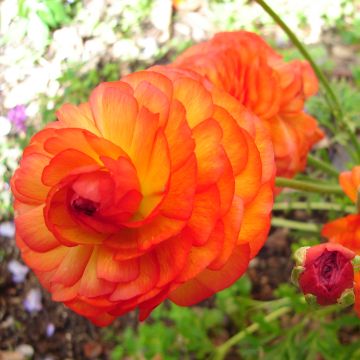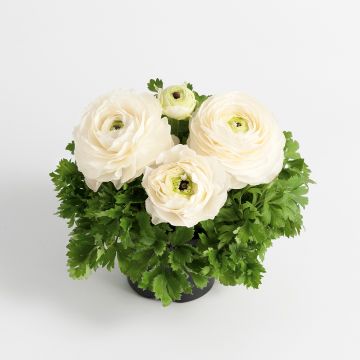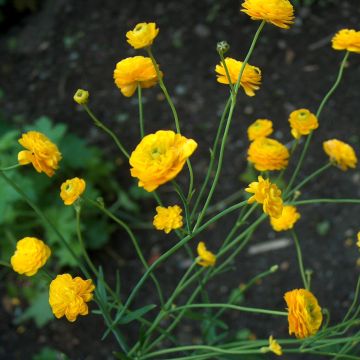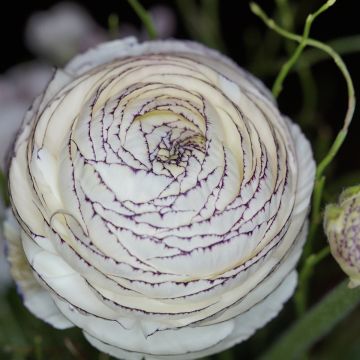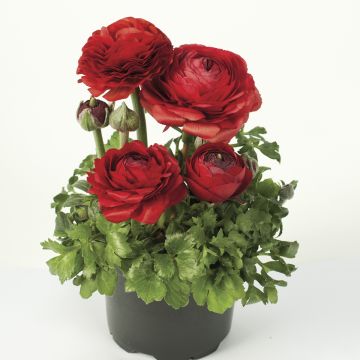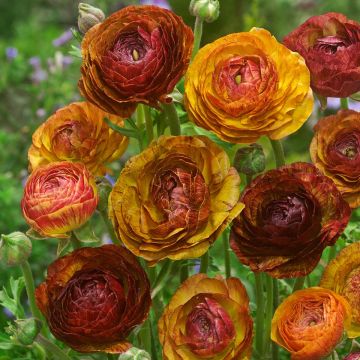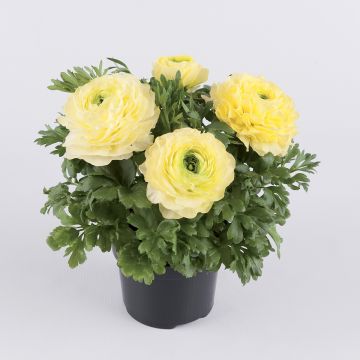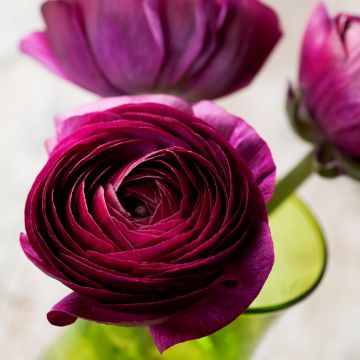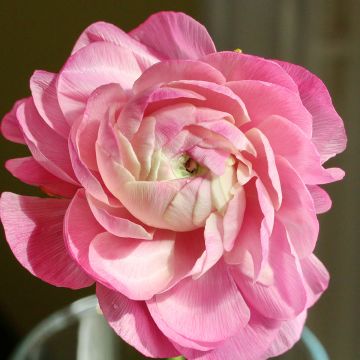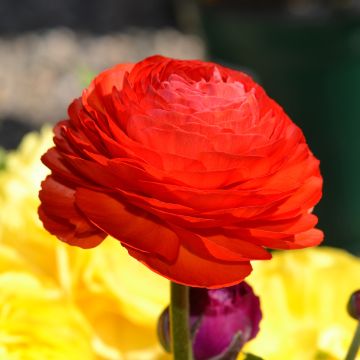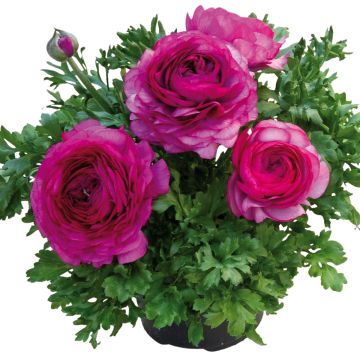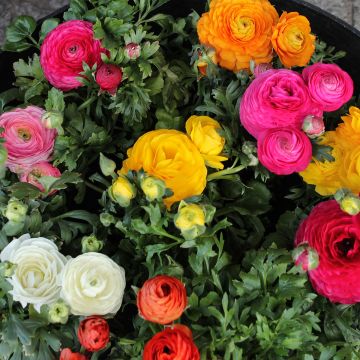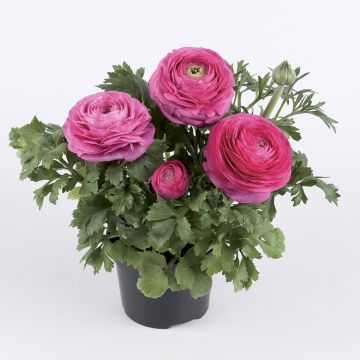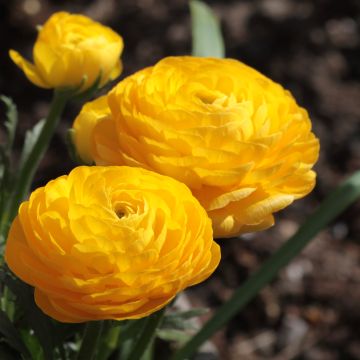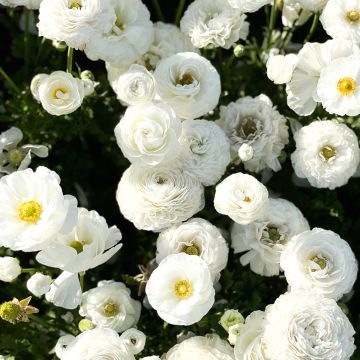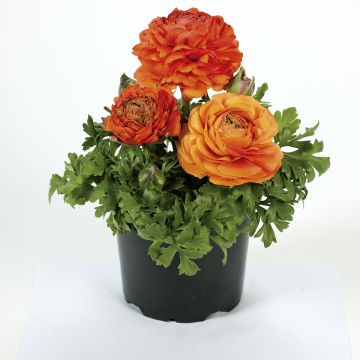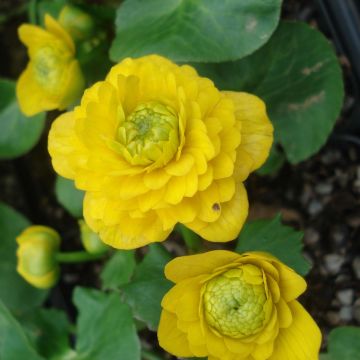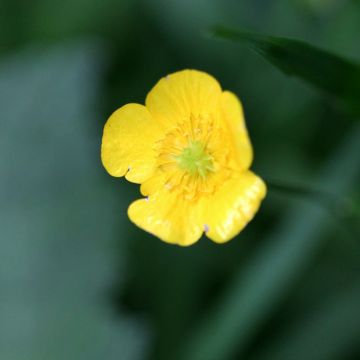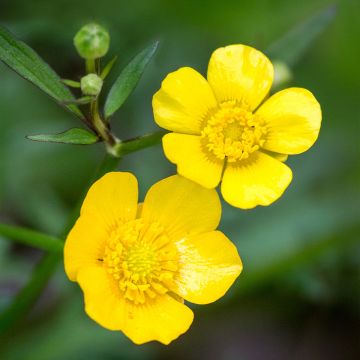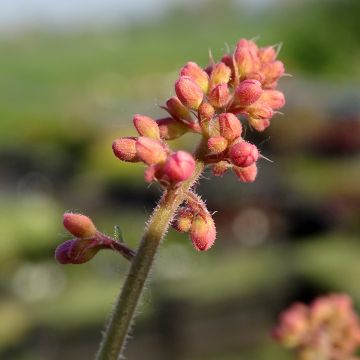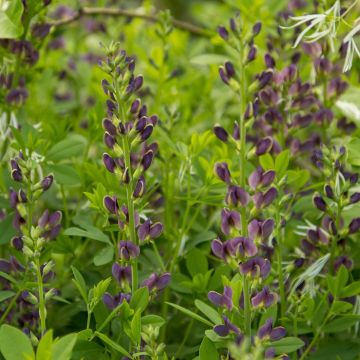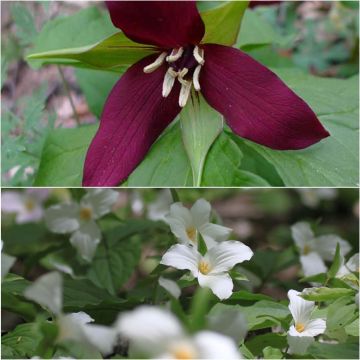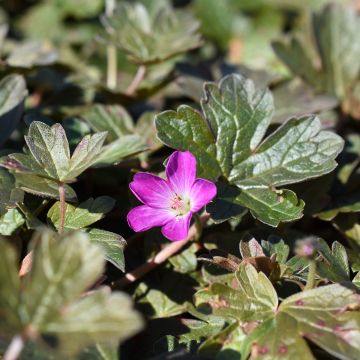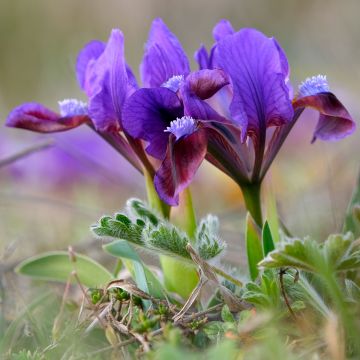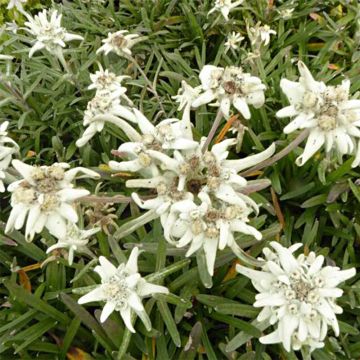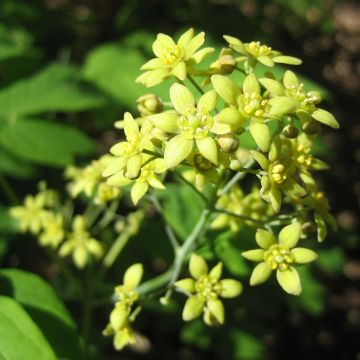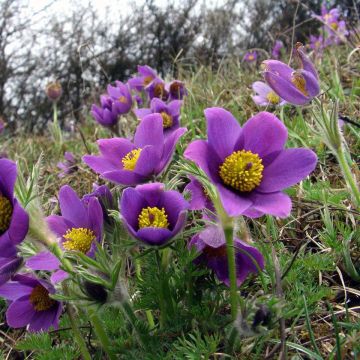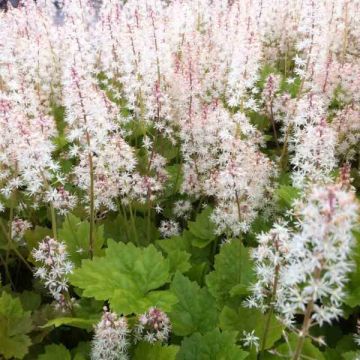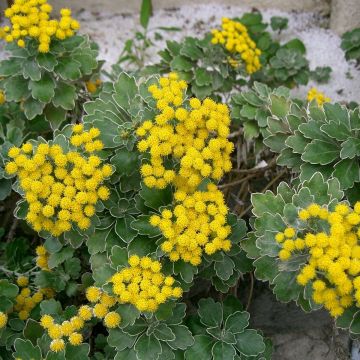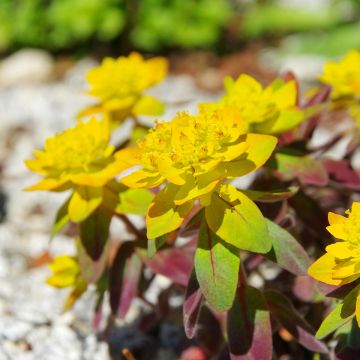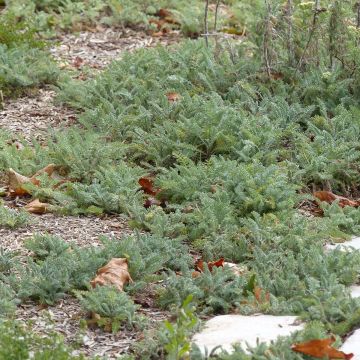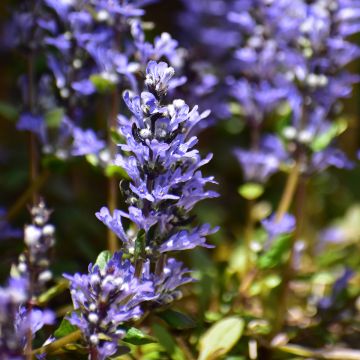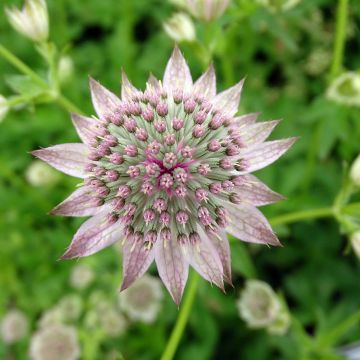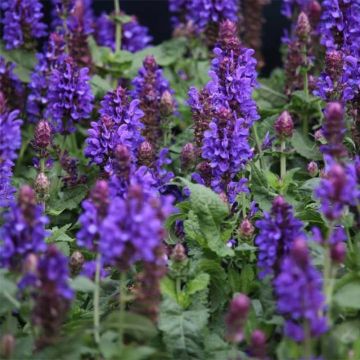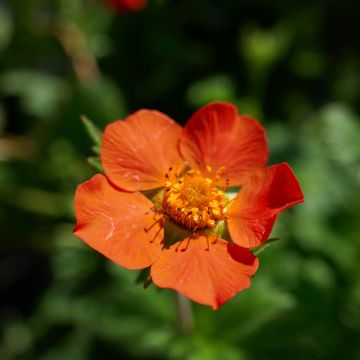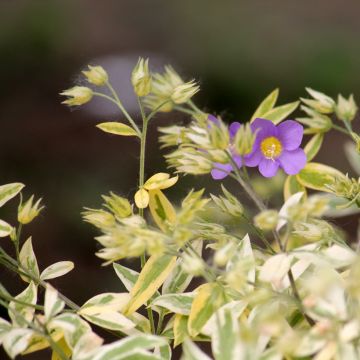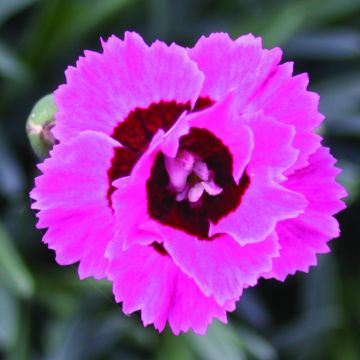Plantfit
Log in / Register
Existing customer?
New customer?
Create an account to track your orders, access our customer service and, if you wish, make the most of our upcoming offers.
My Account
Hello
Shipping country and language
Your country of residence may be:
For a better user experience on our website, you can select:
Your shipping country:
Andorra
Austria
Belgium
Bulgaria
Croatia
Czechia
Denmark
Estonia
Finland
France
Germany
Greece
Hungary
Iceland
Ireland
Italy
Latvia
Lithuania
Luxembourg
Monaco
Netherlands
Poland
Portugal
Romania
Slovakia
Slovenia
Spain
Sweden
Switzerland
Language:
French
English
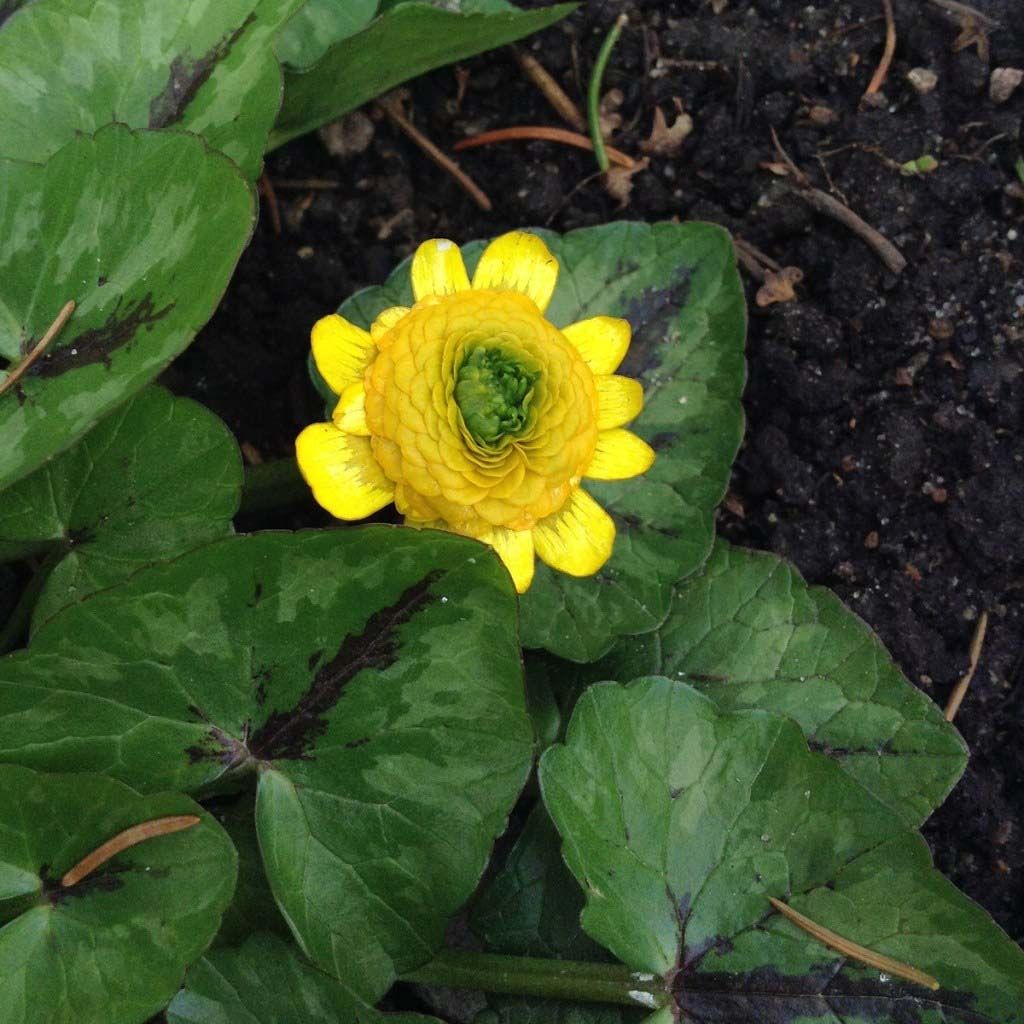

Ranunculus ficaria Collarette - Ficaire fausse-renoncule.
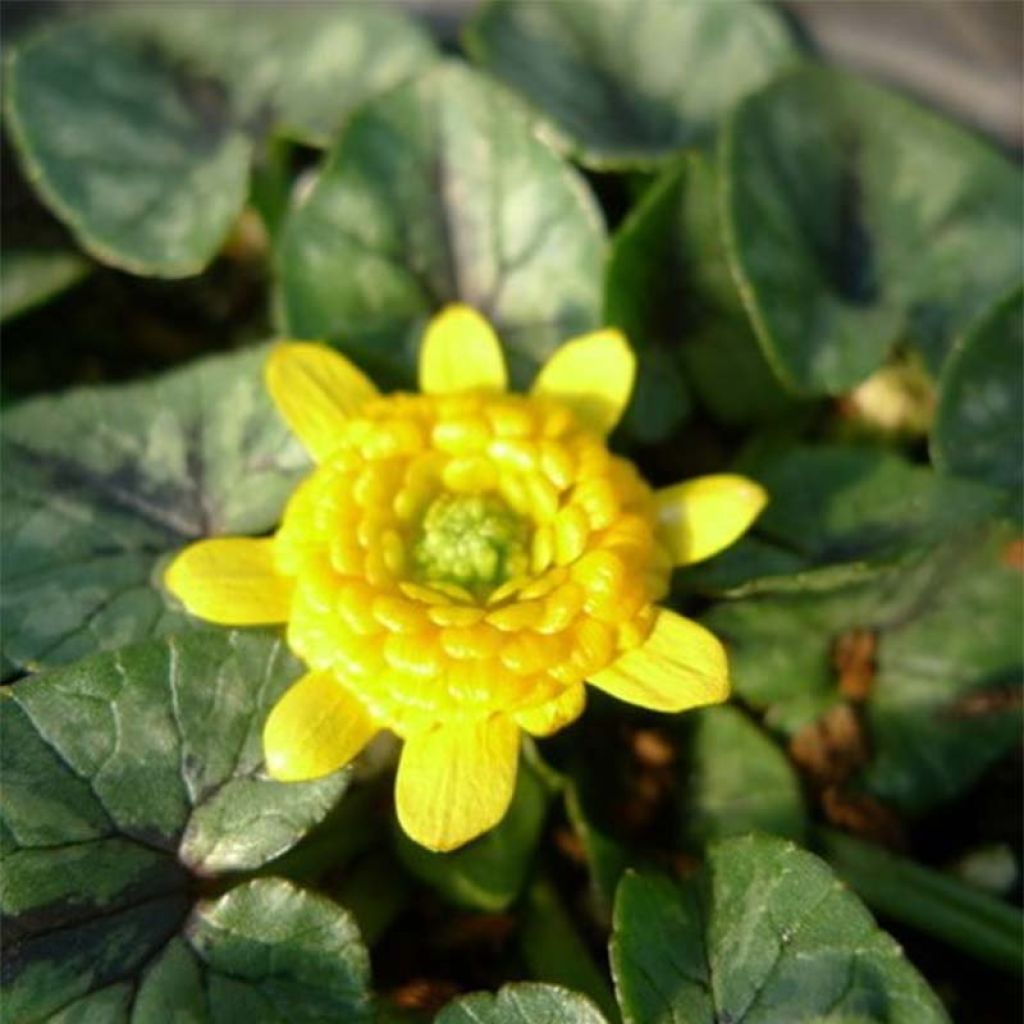

Ranunculus ficaria Collarette - Ficaire fausse-renoncule.
Ranunculus ficaria Collarette - Lesser Celandine
Ranunculus ficaria Collarette
Lesser Celandine, Fig Buttercup, Pilewort
Error on the variety, it is, despite the labeling, certainly 'Brassen Hussy' with purple foliage and single flowers, not doubles.
François , 24/02/2021
Order in the next for dispatch today!
Dispatch by letter from €3.90.
Delivery charge from €5.90 Oversize package delivery charge from €6.90.
More information
This item is not available in your country.
Select delivery date,
and select date in basket
This plant carries a 12 months recovery warranty
More information
We guarantee the quality of our plants for a full growing cycle, and will replace at our expense any plant that fails to recover under normal climatic and planting conditions.
From €5.90 for pickup delivery and €6.90 for home delivery
Express home delivery from €8.90.
Does this plant fit my garden?
Set up your Plantfit profile →
Description
The Ranunculus ficaria 'Collarette' is a variety of lesser celandine that is as beautiful in appearance as it is robust in temperament. This small perennial chooses the beginning of spring to grow and bloom, before going dormant until the following autumn. During these few weeks, it embellishes the ground with a carpet of small, magnificent leaves, marbled with silver and black, where tightly packed, uniquely shaped flowers sparkle like gold. With their very double hearts surrounded by a collar of shiny petals, they evoke golden jewels. Like its woodland ancestor, 'Collarette' gradually spreads, eventually forming beautiful colonies in slightly cool soils, even under the cover of deciduous trees which it tolerates the root competition perfectly. Despite its ephemeral spring growth period, this plant is extremely perennial. Pair it with blue liverworts, anemones blanda.
The Ranunculus ficaria, also known by its Latin names Ficaria verna and Ficaria ranunculoides or simply lesser celandine, belongs to the Ranunculaceae family, just like our famous buttercup. It is native to Europe, western Asia and North Africa, and has been introduced to North America where it has become invasive in some areas. It can be found in open deciduous woodlands, where it flowers early in spring before the trees' leaves develop, as well as forest edges and cool, moist areas like riverbanks. It also thrives in meadows, slopes, and hedges, growing up to 1600m (5249ft) in altitude, always in relatively moist soil.
It is a small perennial plant with brown and swollen roots that form small tubers. These ensure its vegetative multiplication, allowing it to colonize space more or less rapidly. Its aerial growth disappears after flowering, which corresponds to its dormant period. Lesser celandine spends the first part of winter as buds and develops its new foliage before flowering, in January-February depending on the climate.
The cultivar 'Collarette' stands out with its beautifully marbled foliage and double-hearted flowers. Forming a small tuft of 5-7 cm (2-3in) in height for foliage, this lesser celandine spreads at least 30 cm (12in) on the ground. Its foliage consists of small heart-shaped leaves, 4 to 6 cm (2in) wide, thick, shiny, marked by a long black area along the central vein. The lamina is variegated with different shades of green and silver. Flowering occurs from March to May depending on the climate, sometimes as early as February. Clumps of foliage emerge from peduncles 15-20 cm (6-8in) tall, each bearing a solitary flower measuring 3-4 cm (1-2in) in diameter, composed of 6 to 12 petals of a light and shiny yellow, surrounding a ring where numerous petal-like structures are tightly packed. The flower's center is a light green. The flower opens in the morning and closes in the evening, even in cloudy or rainy weather. Before the vegetation disappears, the plant develops bulblets in the axils of the leaves. They detach along with a small piece of stem with a bud. This mini seedling falls to the ground and roots there, ensuring the multiplication of lesser celandine, which reproduces very little by seeds.
The 'Collarette' lesser celandine is very easy to grow in ordinary soil and has good hardiness (-20°C (-4°F)). It prefers moist soils, even marshy ones, but also adapts easily to any good soil that is not too dry. Its summer dormancy allows it to withstand drier periods. It can also be grown in pots to flower on the terrace or balcony, starting from late winter. Plant it at the edge of a grove or in a wildflower bed, in partial shade or full sun, alongside liverworts (Hepatica nobilis), lungworts, brunneras, or blue forget-me-nots, which complement its colour. It is also a good perennial for wet banks, even in partial shade, next to Rodgersias pinnata Chocolate Wings or Actaea simplex Brunette, with their purple foliage.
Ranunculus ficaria Collarette - Lesser Celandine in pictures
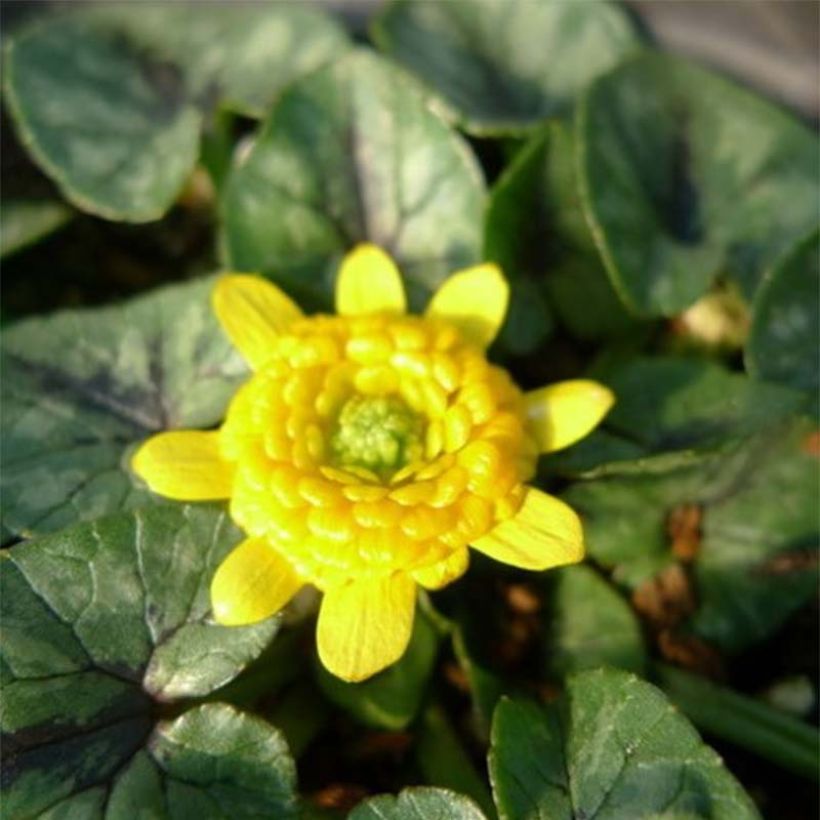

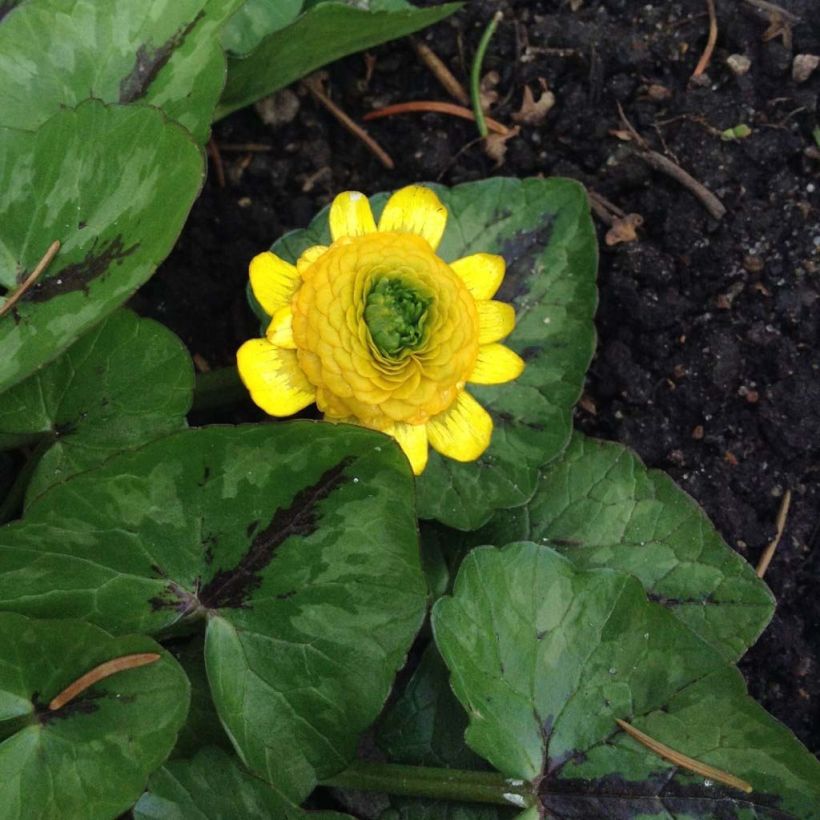

Flowering
Foliage
Plant habit
Botanical data
Ranunculus
ficaria
Collarette
Ranunculaceae
Lesser Celandine, Fig Buttercup, Pilewort
Cultivar or hybrid
Planting and care
The ficaires thrive in any ordinary, moist to wet soil, even clayey. They appreciate sunny exposures but also develop in semi-shade, or under deciduous trees whose root competition they tolerate well. They do not require any maintenance.
Planting period
Intended location
Care
- , onOrder confirmed
Reply from on Promesse de fleurs
Spring flowering perennials
Haven't found what you were looking for?
Hardiness is the lowest winter temperature a plant can endure without suffering serious damage or even dying. However, hardiness is affected by location (a sheltered area, such as a patio), protection (winter cover) and soil type (hardiness is improved by well-drained soil).

Photo Sharing Terms & Conditions
In order to encourage gardeners to interact and share their experiences, Promesse de fleurs offers various media enabling content to be uploaded onto its Site - in particular via the ‘Photo sharing’ module.
The User agrees to refrain from:
- Posting any content that is illegal, prejudicial, insulting, racist, inciteful to hatred, revisionist, contrary to public decency, that infringes on privacy or on the privacy rights of third parties, in particular the publicity rights of persons and goods, intellectual property rights, or the right to privacy.
- Submitting content on behalf of a third party;
- Impersonate the identity of a third party and/or publish any personal information about a third party;
In general, the User undertakes to refrain from any unethical behaviour.
All Content (in particular text, comments, files, images, photos, videos, creative works, etc.), which may be subject to property or intellectual property rights, image or other private rights, shall remain the property of the User, subject to the limited rights granted by the terms of the licence granted by Promesse de fleurs as stated below. Users are at liberty to publish or not to publish such Content on the Site, notably via the ‘Photo Sharing’ facility, and accept that this Content shall be made public and freely accessible, notably on the Internet.
Users further acknowledge, undertake to have ,and guarantee that they hold all necessary rights and permissions to publish such material on the Site, in particular with regard to the legislation in force pertaining to any privacy, property, intellectual property, image, or contractual rights, or rights of any other nature. By publishing such Content on the Site, Users acknowledge accepting full liability as publishers of the Content within the meaning of the law, and grant Promesse de fleurs, free of charge, an inclusive, worldwide licence for the said Content for the entire duration of its publication, including all reproduction, representation, up/downloading, displaying, performing, transmission, and storage rights.
Users also grant permission for their name to be linked to the Content and accept that this link may not always be made available.
By engaging in posting material, Users consent to their Content becoming automatically accessible on the Internet, in particular on other sites and/or blogs and/or web pages of the Promesse de fleurs site, including in particular social pages and the Promesse de fleurs catalogue.
Users may secure the removal of entrusted content free of charge by issuing a simple request via our contact form.
The flowering period indicated on our website applies to countries and regions located in USDA zone 8 (France, the United Kingdom, Ireland, the Netherlands, etc.)
It will vary according to where you live:
- In zones 9 to 10 (Italy, Spain, Greece, etc.), flowering will occur about 2 to 4 weeks earlier.
- In zones 6 to 7 (Germany, Poland, Slovenia, and lower mountainous regions), flowering will be delayed by 2 to 3 weeks.
- In zone 5 (Central Europe, Scandinavia), blooming will be delayed by 3 to 5 weeks.
In temperate climates, pruning of spring-flowering shrubs (forsythia, spireas, etc.) should be done just after flowering.
Pruning of summer-flowering shrubs (Indian Lilac, Perovskia, etc.) can be done in winter or spring.
In cold regions as well as with frost-sensitive plants, avoid pruning too early when severe frosts may still occur.
The planting period indicated on our website applies to countries and regions located in USDA zone 8 (France, United Kingdom, Ireland, Netherlands).
It will vary according to where you live:
- In Mediterranean zones (Marseille, Madrid, Milan, etc.), autumn and winter are the best planting periods.
- In continental zones (Strasbourg, Munich, Vienna, etc.), delay planting by 2 to 3 weeks in spring and bring it forward by 2 to 4 weeks in autumn.
- In mountainous regions (the Alps, Pyrenees, Carpathians, etc.), it is best to plant in late spring (May-June) or late summer (August-September).
The harvesting period indicated on our website applies to countries and regions in USDA zone 8 (France, England, Ireland, the Netherlands).
In colder areas (Scandinavia, Poland, Austria...) fruit and vegetable harvests are likely to be delayed by 3-4 weeks.
In warmer areas (Italy, Spain, Greece, etc.), harvesting will probably take place earlier, depending on weather conditions.
The sowing periods indicated on our website apply to countries and regions within USDA Zone 8 (France, UK, Ireland, Netherlands).
In colder areas (Scandinavia, Poland, Austria...), delay any outdoor sowing by 3-4 weeks, or sow under glass.
In warmer climes (Italy, Spain, Greece, etc.), bring outdoor sowing forward by a few weeks.
